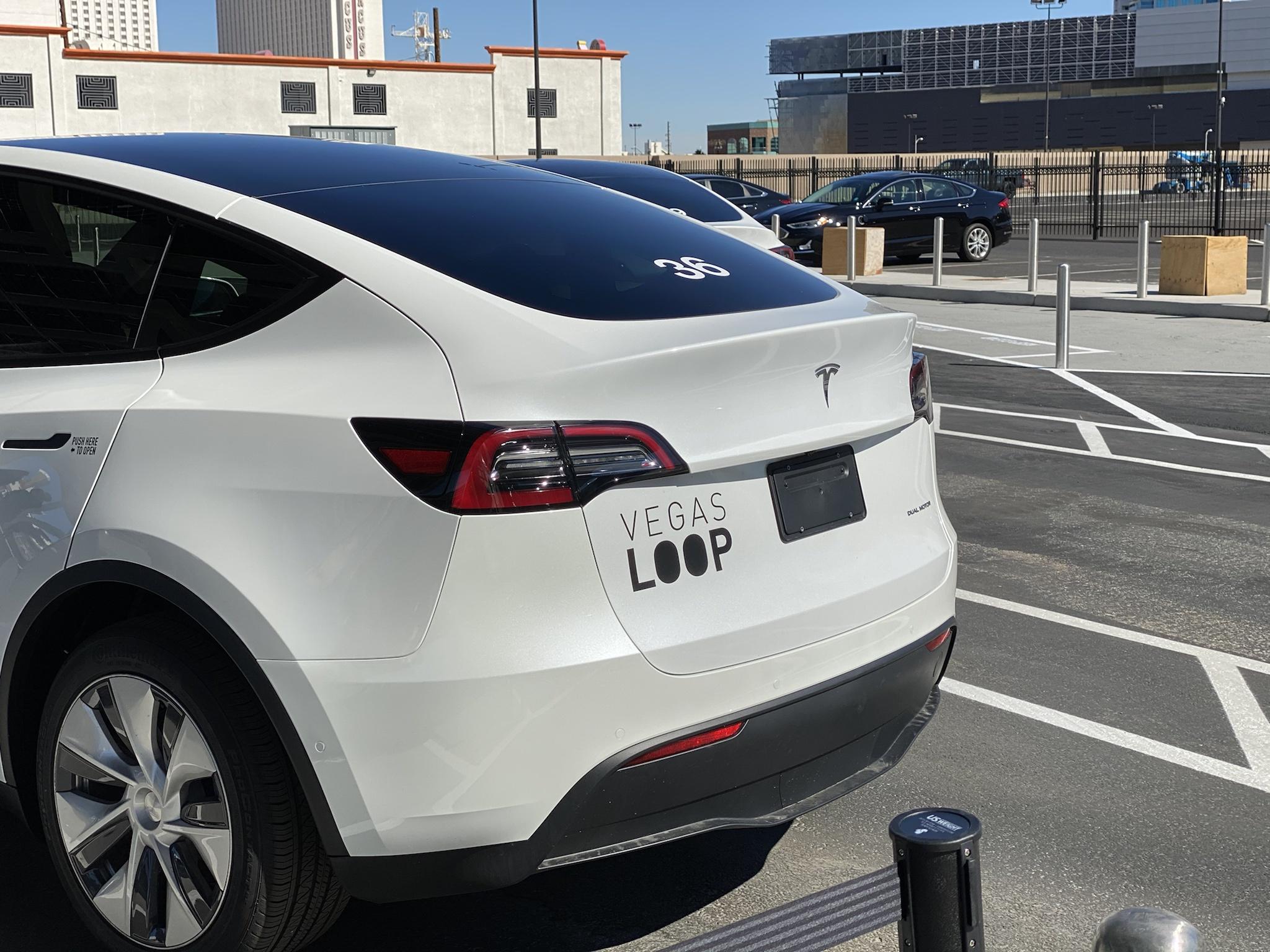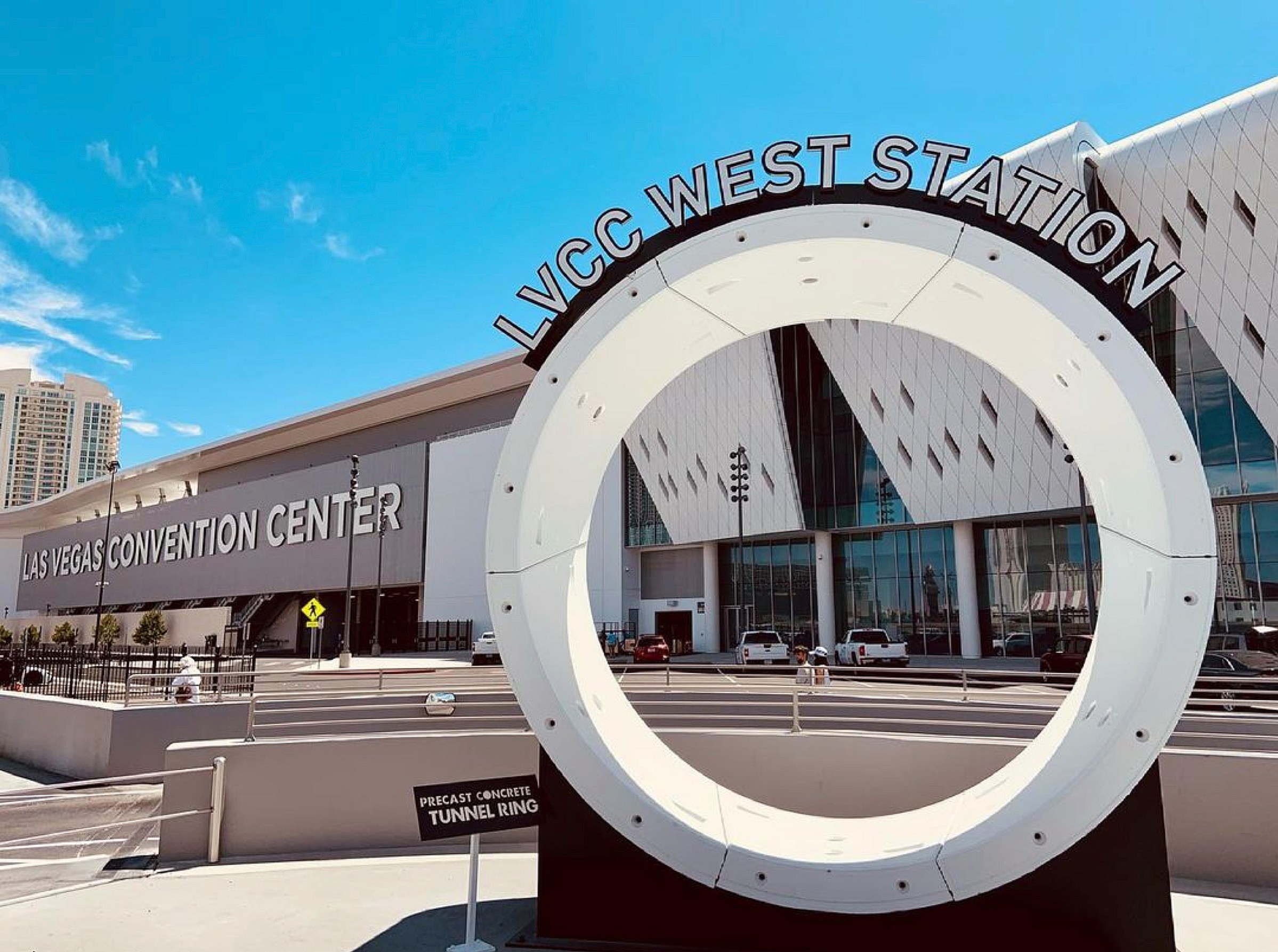

News
First Look at a ride inside the Boring Company’s LVCC Loop as testing begins
Elon Musk’s Boring Company performed capacity testing in Las Vegas at its Las Vegas Convention Center Loop yesterday as the Sin City prepares to reopen with no restrictions on June 1st. In preparation for Las Vegas to welcome back travelers, visitors, and residents alike to the downtown area after over a year of quarantine, the Boring Company is preparing for the first days of operation with its newly constructed Vegas Loop, a public transportation option that aims to give travelers efficient express options to travel to and from the city’s most popular hotspots.
A fleet of Model 3, Model Y, and Model X vehicles was on the ground in Las Vegas, and eyewitnesses estimate around 50 Tesla electric vehicles were a part of the testing phase. Additionally, less than 500 people were a part of the tests that aimed to give the Boring Company and the LVCC officials some clarity on how the Loop would run once the city fills back up with people.
Credit: eirunning85 | imgur
One eyewitness, u/adjudicatedmonster on the r/BoringCompany subreddit, gave several details about what they saw while the testing phase was ongoing. One of the most notable parts of the test was the constant loop of vehicles working on merging and coexisting smoothly. This remains to be the most crucial part of the LVCC Loop’s effectiveness because, without smooth and uneventful travel, the Loop will not work efficiently. However, u/adjudicatedmonster said that boarding the vehicles and getting moving went “smoother than expected.” The Model X took the longest to board and get going, while the Model Y was unequivocally the most efficient.
Credit: jacksonjourneys | Instagram
Most cars were filled with three passengers, plus a driver who controlled the vehicle manually through the tunnel. u/adjudicatedmonster said the vehicles traveled around 30 MPH through turns and around 39 MPH on straightaways.
Video thanks to eirunning95 on imgur
The Boring Company also gave out souvenirs, like Boring Company hats and some lucky guests even got to operate Boring Company flamethrowers.
View this post on Instagram
As Las Vegas prepares to reopen on June 1st, there will be no restrictions on businesses or activities, according to KTNV, an ABC affiliate station in Las Vegas. Life is getting back to normal, and it is expected to be busy, considering the Sin City hasn’t had a normal week of business in over a year. In 2019, Las Vegas recorded over 42 million visitors, a far cry from the only 19 million that made their way to the city last year as the pandemic raged on. For years, public transportation has been a struggle for Vegas visitors. Limited options combined with high prices have made walking around the city a more viable option. However, the LVCC Loop from the Boring Company won’t break the bank, and it will get visitors from Point A to Point B in a fraction of the time. Projections estimate that the Loop will move 8,000 people every hour.
For now, the LVCC Loop will transport passengers across the Convention Center Campus that spans 73 acres big. Eventually, Vegas visitors and residents will have the ability to go from resort to resort and hotspot to hotspot thanks to The Boring Company’s Vegas Loop. More hotels and resorts continue to seek entrance into the Vegas Loop, with the most recent being Resorts World, located just off of the Vegas Strip.
What do you think? Let us know in the comments below, or be sure to email me at joey@teslarati.com or on Twitter @KlenderJoey.

Elon Musk
Elon Musk and Tesla AI Director share insights after empty driver seat Robotaxi rides
The executives’ unoccupied tests hint at the rapid progress of Tesla’s unsupervised Robotaxi efforts.

Tesla CEO Elon Musk and AI Director Ashok Elluswamy celebrated Christmas Eve by sharing personal experiences with Robotaxi vehicles that had no safety monitor or occupant in the driver’s seat. Musk described the system’s “perfect driving” around Austin, while Elluswamy posted video from the back seat, calling it “an amazing experience.”
The executives’ unoccupied tests hint at the rapid progress of Tesla’s unsupervised Robotaxi efforts.
Elon and Ashok’s firsthand Robotaxi insights
Prior to Musk and the Tesla AI Director’s posts, sightings of unmanned Teslas navigating public roads were widely shared on social media. One such vehicle was spotted in Austin, Texas, which Elon Musk acknowleged by stating that “Testing is underway with no occupants in the car.”
Based on his Christmas Eve post, Musk seemed to have tested an unmanned Tesla himself. “A Tesla with no safety monitor in the car and me sitting in the passenger seat took me all around Austin on Sunday with perfect driving,” Musk wrote in his post.
Elluswamy responded with a 2-minute video showing himself in the rear of an unmanned Tesla. The video featured the vehicle’s empty front seats, as well as its smooth handling through real-world traffic. He captioned his video with the words, “It’s an amazing experience!”
Towards Unsupervised operations
During an xAI Hackathon earlier this month, Elon Musk mentioned that Tesla owed be removing Safety Monitors from its Robotaxis in Austin in just three weeks. “Unsupervised is pretty much solved at this point. So there will be Tesla Robotaxis operating in Austin with no one in them. Not even anyone in the passenger seat in about three weeks,” he said. Musk echoed similar estimates at the 2025 Annual Shareholder Meeting and the Q3 2025 earnings call.
Considering the insights that were posted Musk and Elluswamy, it does appear that Tesla is working hard towards operating its Robotaxis with no safety monitors. This is quite impressive considering that the service was launched just earlier this year.
Elon Musk
Starlink passes 9 million active customers just weeks after hitting 8 million
The milestone highlights the accelerating growth of Starlink, which has now been adding over 20,000 new users per day.

SpaceX’s Starlink satellite internet service has continued its rapid global expansion, surpassing 9 million active customers just weeks after crossing the 8 million mark.
The milestone highlights the accelerating growth of Starlink, which has now been adding over 20,000 new users per day.
9 million customers
In a post on X, SpaceX stated that Starlink now serves over 9 million active users across 155 countries, territories, and markets. The company reached 8 million customers in early November, meaning it added roughly 1 million subscribers in under seven weeks, or about 21,275 new users on average per day.
“Starlink is connecting more than 9M active customers with high-speed internet across 155 countries, territories, and many other markets,” Starlink wrote in a post on its official X account. SpaceX President Gwynne Shotwell also celebrated the milestone on X. “A huge thank you to all of our customers and congrats to the Starlink team for such an incredible product,” she wrote.
That growth rate reflects both rising demand for broadband in underserved regions and Starlink’s expanding satellite constellation, which now includes more than 9,000 low-Earth-orbit satellites designed to deliver high-speed, low-latency internet worldwide.
Starlink’s momentum
Starlink’s momentum has been building up. SpaceX reported 4.6 million Starlink customers in December 2024, followed by 7 million by August 2025, and 8 million customers in November. Independent data also suggests Starlink usage is rising sharply, with Cloudflare reporting that global web traffic from Starlink users more than doubled in 2025, as noted in an Insider report.
Starlink’s momentum is increasingly tied to SpaceX’s broader financial outlook. Elon Musk has said the satellite network is “by far” the company’s largest revenue driver, and reports suggest SpaceX may be positioning itself for an initial public offering as soon as next year, with valuations estimated as high as $1.5 trillion. Musk has also suggested in the past that Starlink could have its own IPO in the future.
News
NVIDIA Director of Robotics: Tesla FSD v14 is the first AI to pass the “Physical Turing Test”
After testing FSD v14, Fan stated that his experience with FSD felt magical at first, but it soon started to feel like a routine.

NVIDIA Director of Robotics Jim Fan has praised Tesla’s Full Self-Driving (Supervised) v14 as the first AI to pass what he described as a “Physical Turing Test.”
After testing FSD v14, Fan stated that his experience with FSD felt magical at first, but it soon started to feel like a routine. And just like smartphones today, removing it now would “actively hurt.”
Jim Fan’s hands-on FSD v14 impressions
Fan, a leading researcher in embodied AI who is currently solving Physical AI at NVIDIA and spearheading the company’s Project GR00T initiative, noted that he actually was late to the Tesla game. He was, however, one of the first to try out FSD v14.
“I was very late to own a Tesla but among the earliest to try out FSD v14. It’s perhaps the first time I experience an AI that passes the Physical Turing Test: after a long day at work, you press a button, lay back, and couldn’t tell if a neural net or a human drove you home,” Fan wrote in a post on X.
Fan added: “Despite knowing exactly how robot learning works, I still find it magical watching the steering wheel turn by itself. First it feels surreal, next it becomes routine. Then, like the smartphone, taking it away actively hurts. This is how humanity gets rewired and glued to god-like technologies.”
The Physical Turing Test
The original Turing Test was conceived by Alan Turing in 1950, and it was aimed at determining if a machine could exhibit behavior that is equivalent to or indistinguishable from a human. By focusing on text-based conversations, the original Turing Test set a high bar for natural language processing and machine learning.
This test has been passed by today’s large language models. However, the capability to converse in a humanlike manner is a completely different challenge from performing real-world problem-solving or physical interactions. Thus, Fan introduced the Physical Turing Test, which challenges AI systems to demonstrate intelligence through physical actions.
Based on Fan’s comments, Tesla has demonstrated these intelligent physical actions with FSD v14. Elon Musk agreed with the NVIDIA executive, stating in a post on X that with FSD v14, “you can sense the sentience maturing.” Musk also praised Tesla AI, calling it the best “real-world AI” today.








